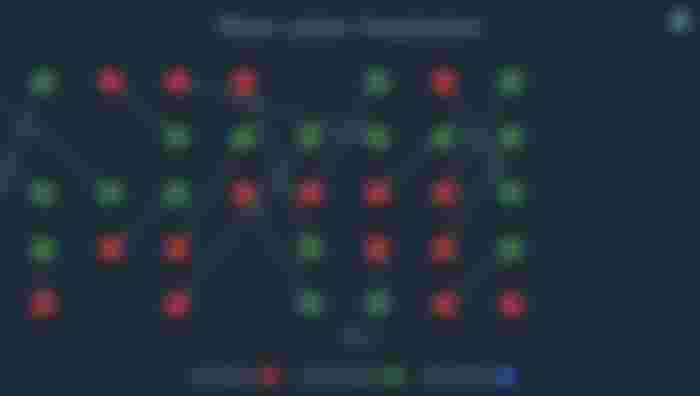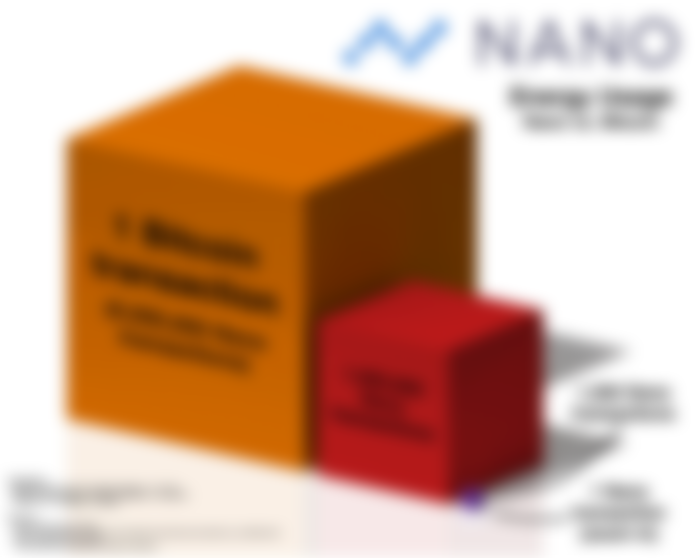NANO - The Future of Crypto!

The basics of Nano
Nano is a digital payment protocol designed to be accessible and lightweight, with a focus on removing inefficiencies present in other cryptocurrencies. With ultrafast transactions and zero fees on a secure, green and decentralized network, this makes Nano ideal for everyday transactions.
To begin, all you have to do is try Nano for yourself in just 2 minutes to discover why it is so popular.
Here what you have to do:
Install Natrium.
Visit a Nano Faucet.
Fill in your Nano_ address and hit send.
It's recommended that you get a second wallet on the side, such as www.nault.cc on your browser or Nalli as a second app on your phone, to fully appreciate Nano's quickness and ease of usage. Nano has a tendency to transfer information faster than you can change screens. See for yourself by sending some from one wallet to the other. Sending to yourself like this doesn’t seem impressive, but the transfer you just did is possible from and to anyone, anywhere, anytime, with no one able to stop your transfer and not a cent paid in fees. It’s secure, borderless and uncensorable money, open to anyone.
An overview of cryptocurrency's history
Bitcoin was the first cryptocurrency. Bitcoin, invented by Satoshi Nakamoto, solved the problem of having digital money that could not be copied. It provided a kind of money that no single party could print or prevent transfers of. As a result, it provided a mechanism for anyone with an internet connection to transact worldwide without relying on (central) banks.
Following 2008, this was an appealing proposition. Many banks were being bailed out at the time, and central banks were printing a lot of extra money to support these bailouts. Since then, money production has continued, leading many individuals to believe that as more dollars and euros are issued, the dollars and euros they own are becoming increasingly worthless.

However, Bitcoin comes with its own share of issues. Transfers take, on average, over 2 hours, while being incredibly expensive, and Bitcoin uses more energy than some countries. It doesn’t scale, with capacity maxing out at roughly 7 transactions per second, and due to the fees and waiting times is practically unusable as currency. While a beautiful idea, as a means of payment it has failed.
Enter Nano
Nano’s primary developer, Colin LeMahieu, was enthusiastic about the possibilities that a self-sovereign form of money like Bitcoin offered. However, he was frustrated with the inefficiencies in (then) current cryptocurrencies. In 2014, he began development on a new cryptocurrency. The goal was to create a cryptocurrency that could be used for daily payments by everyone, without the carbon footprint that comes with Bitcoin.
To accomplish this, Colin came up with a new architecture for Nano. Rather than having one big blockchain, where everyone competes for space in the next “block” to be mined, Nano utilizes something called the Block Lattice. Instead of competing for space, users add blocks to their own chain and broadcast this addition to the network.

Block Lattice image from Hackernoon
The block lattice design is combined with Open Representative Voting in Nano (ORV). Using their Nano balance, each Nano holder votes for a Representative. A Representative can be anyone, and they can alter their vote at any time. These Representatives confirm transactions (requiring 67 percent consensus) as soon as they see one, implying that Nano's pace is mostly limited by the internet connection latency (practically the speed of light). This is what allows the Nano network to confirm transactions within a second.
It takes a lot of energy to be the first to mine a block in mining. There is no such thing as a competition in Nano. The network is cooperative because there are no mining rewards or fees. Hardware resources are used in mining chains to compete. Every available resource is employed in Nano to ensure that transactions are confirmed as safely and quickly as feasible. If Representatives upgrade their hardware, the throughput of the Nano network increases. This focus on pure efficiency and lack of waste makes Nano a green option that uses very little energy.

To summarize, Nano employs a block lattice in which each individual has their own chain rather than a single large chain. Anyone, at any time, can add blocks to their own chain, and Representatives (validators) validate transactions as soon as they see them. Nano is able to be instant, feeless, scalable, and extremely energy efficient as a result of this.
Spam in Nano
Many people believe Nano is vulnerable to spam because it is free. This is partially correct. Nano was recently spammed, causing the network's speed to suffer. However, there are a few reasons to believe that Nano can (still) be readily spammed:
While Nano is feeless, it is not free to transact. For every transaction, a small PoW has to be performed by your wallet. When you are a regular user, the wallet does this for you, and you don't notice it. When you try to do millions of transactions, this becomes more expensive.
Transactions in Nano used to be prioritized by PoW performed. If a spammer was spamming the network at PoW difficulty 1 (comparable to a fee paid of $0.0001), you could do PoW difficulty 2 (comparable to a fee paid of $0.0002) and get priority over the spammer. Following the spam attack, Nano is implementing even stronger spam resistance. Simply put, your priority is your balance. For a spammer using small amounts to spam constantly, both balance and time since last use will be low, therefore the priority of the transaction is low. To have an impact while spamming the network, you therefore need to hold large amounts of Nano. This is expensive, as you need to first buy this Nano. It also means that if you spam the network to degrade performance, any price decrease will hurt you.
In theory, this overcomes transaction flooding threats by making congestion of the network prohibitively expensive (i.e. you would need 50 percent of the supply to consume 50 percent of the throughput). Although the framework for operationalizing this was built in v22, the actual implementation is expected in the upcoming edition (v23).
Nano's mission
Nano is designed to be a modern-day digital currency. It was handed away for free to anyone who was ready to solve captchas. As a result, Nano was provided widely and fairly, mostly to individuals in developing nations. It is highly suited for lower-income countries due of its feeless nature. It functions as a means of exchange and money because it is instant. Because there are no fees and there is no inflation, no money is lost when either storing value in Nano, or when using Nano.
The vision of Nano is broad. It allows for cheap remittances. Foreign workers pay an average of 6.8% in fees to transfer money home. Nano can do this far more efficiently, both at lower cost and faster. It allows merchants to start accepting payments anywhere in the world, instantly, without fees. It enables streamers to receive feeless tips, enables anyone creating art or self-publishing to instantly take small (or large) payments for their works. It enables anyone suffering from hyperinflation to securely store their money in a currency whose supply can’t be increased. It allows charities to take donations from all over the world. This means less money going to middlemen, and more money arriving directly where it’s needed. Nano makes money efficient, frictionless, secure and borderless.
That’s all! To really try it out I’d recommend getting a second wallet such as Nault (web-based) or Nalli, then sending some Nano from your first wallet to the second.
NANO have recently done a giveaway as ‘Nano has reached big milestone of 100 000 reddit members.’
I hope that this post answered some of your basic Nano questions.
If my article is helpful to you or you are interested, please send me a "LIKE👍"!
Thank you.
For Resource visit this link:



Thanks for this article i learn some ideas about nano and in crypto♥️